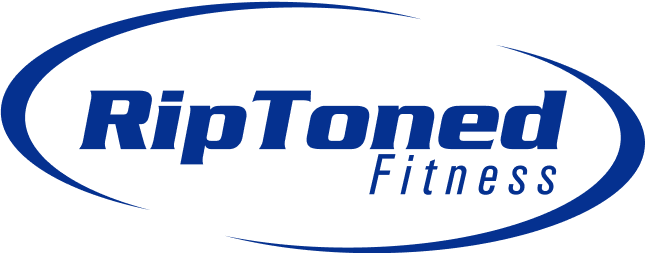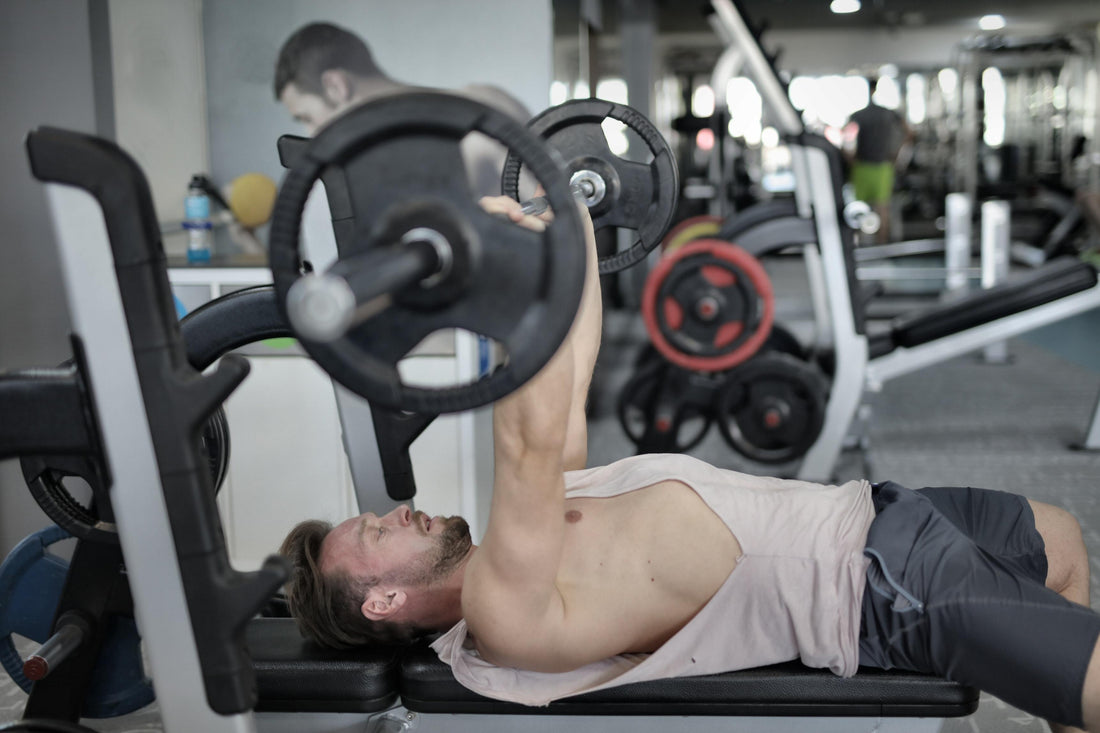Photo by Andrea Piacquadio from Pexels
“The Bench Press is one of the most famous lifts in the gym. It's the upper-body workout that lets you lift the most weight and build up the upper-body strength like no other exercise.”
You may walk into any modern-day gym in the world, irrespective of size or area, you'll find they all have one common factor: there's a bench under a secured barbell waiting for the next person to bench.
Not surprisingly, the bench press is just such a highly regarded exercise. Once you've grasped the standard movement and pattern, you'll see quick results in your strength and size. The three large muscle groups: chest, front shoulders, and triceps are where you'll start to notice them.
But if you've just joined the gym or are new to weight lifting, how do you know if you're ready to take on the bench press? Here's how.
When are you prepared FOR the Bench Press?
Before you get under the bar, you need to be aware of your strength level. If you have the power on your chest, shoulders, and triceps to control the weight of the bar. The Olympic barbell, the basic one used for bench press in gyms, actually weighs 20kg. Depending on your weight lifting experience, natural build and genes, this may or may not sound like a lot.
Simple steps to Bench Press WITH the right form
Bench Press on the Power Rack for safety. Set the safety pins to the correct height so they can catch the weight if you fail to lift it. You don't need a trainer if you have a Bench Press with a Power Rack. If you don't see a Power Rack, ask someone in the gym to spot for you when you want to Bench Press.
Then use these simple steps to Bench Press in the right form.
⦁ SETUP
Lie down on a flat bench with your eyes underneath the bar. Raise your chest and tighten your shoulder blades. The feet should be flat on the floor.
⦁ GRAB THE BAR
Put your pinkie finger on your bar's ring marks. Hold the bar at the base of your palm with a packed grip and sharp wrists.
⦁ UNRACK
Take a large breath and unrack the bar by straightening your arms. Move the bar over your shoulders and your elbows are locked.
⦁ LOWER YOUR BAR
Lower it to your mid-chest while tucking your elbows at 75°. Keep your forearms upright. Hold your breath.
⦁ PRESS
Press the bar from the middle of your chest to the top of your shoulders. Keep your hips on the bench. Lock your elbows to the top. Breathe.
WARNING & A VARIATION
Amongst other things, it can be quite easy to injure the stabilizing rotator cuff muscles around your shoulders which can be time consuming to heal. Early prevention is far better than treatment so set your ego aside and learn how to use proper form from the beginning.
While watching others in the gym, you might notice them press at various angles. It is correct, muscle activation in the upper chest area is higher when pressing a bench set at a 30° or 45° angle than on a flat bench. Whereas the lower pec muscle activation is higher on a flat bench.
Consider wearing a lifting belt to protect your core and provide enhanced performance.
If you are lifting heavy or have injured or weak wrists consider wearing wrist wraps to protect your wrists and give you a bump in performance.
HOW TO BENCH PRESS PROPERLY?
Avoid these mistakes to build more strength and size, and prevent injuries.
⦁ Full Grip
Wrap the thumbs around the bar. This is the fastest and most reliable way to do a heavy Bench Press. Try squeezing the bar to prevent it from moving in your hands. Your arms, shoulders, and chest muscles are going to contract harder, increasing your Bench Press. Don't relax or open your hands while performing your Bench Press or the bar is moving around. Keep your hands closed and press the bar as hard as you can.
⦁ No Thumbless Grip
The bar can slip from your hands if you hold it down without your thumbs. If it slips, there won't be a spotter quick enough to catch the bar. Your face, throat, or chest will be crushed. You're going to be injured, or worse. Wrap the thumb around the bar to secure it. Squeeze the bar to prevent it from moving. At the same time, this will help boost your Bench Press. If your wrists hurt, hold down the bar to stop your wrists from bending.
⦁ Grip Low Palm
Hold the bar at the base of your palm, close to your wrists. Don't simply hold it close to your fingers, like the Deadlift, or otherwise, your wrists will bend back. Bent wrists and ankles hurt. Bent wrists also make the weight more difficult for a bench because the bar is much further away from your wrists. This is bad leverage and a terrible transfer of power. Grip the bar with a low palm so it rests over your wrists and elbows. You're going to be benching more weight without wrist pain.
⦁ Bulldog Grip
The simplest way to grip the low palm bar is to use the Bulldog Grip. Imagine how the Bulldog plants his paws. Grip the bar by rotating your hands in before you close them. Press the bar so that it can't move. The Bulldog Grip is going to feel strange and far less secure. But it's not less secure, because your thumbs hold the bar and prevent it from slipping out of your hands. Try it for a couple of workouts, you're going to get used to it.

infographic by graphicspedia.net and decibelnutrition.com
Incline Press, Flat bench press and decline press - What's the difference?
Our resident 2 time Olympic weightlifting champ explains how each work out targets different muscle groups and it's physical impact.
“Incline Bench Press is a compound upper body and chest exercise, which means that various joints and tendons contribute to the movement.”
As a variation of the conventional flat Bench Press, it is considered one of the greatest exercises to develop a solid and bigger upper body.
You need some type of incline bench to perform the Incline Bench Press. are the Here are three most-common options.
⦁ Modern day gyms have a reclining bench station designed for this exercise. This is the best option.
⦁ If this isn't available, you'll need to find a retractable bench, elevate it to about a 45-degree angle and place it in a power/squat rack.
⦁ Finally, you can stack at least four plates on the ground and place one end of a flat bench on it to make a slight incline.
For the second and third option, test your layout with an empty barbell before adding weight to make sure the bench, bar height, and safety pins are in the right place.
Step 1: Lie on the incline bench and place your legs on the floor with your hips about 6 inches above the seat. Now slide down so that your butt is on the seat without raising your legs from the ground. Tighten the glutes and the core.
Step 2: Pick up the barbell with a grip fractionally wider than the shoulder width and hold it as neatly as you can. Unrack the bar and bring it straight over your shoulders. This is the starting position.
Step 3: Take some deep breaths and lower the bar while having the control of the upper part of your chest. Your elbows should be around a 45-degree angle with your body.
Step 4: Drive your legs to the ground and press the bar powerfully to return to the starting position.
Incline Bench Press Mistakes
⦁ Lowering the bar to your stomach
The bar path on the Bench Press usually goes from over your shoulders to under your chest. However, this creates problems with the Incline Bench Press due to the angle of the lift. If you bring down the bar to your stomach, your upper arms will be angled forward, and the bar would slip out of your hands. Avoid this error at all cost.
⦁ Bouncing the bar off your chest
This is a big “no” with every variation of the Bench Press. It's fine to touch your chest with the bar, but don't push it. It's breaking the rules and it's harmful as you start to lift a heavier plate. If you find yourself bouncing the bar out of habit, you may want to consider a lighter weight plate.
BENCH PRESS CONSIDERATIONS
⦁ Elbows Flaring Out – What am I supposed to do?
Technique – Technique, technique, and technique! Make sure you effectively pull the bar down as you curl your elbows to your sides. At first, with this technique, you're not going to be able to lift as much weight. As you learn the technique and develop your triceps and back power, you'll be able to do more weight and maintain your shoulders proper position.
⦁ I'm missing out on my chest – what am I supposed to do?
Technique - Keep tight and also don't take it easy! Keep the air you took just before the movement began and keep driving your feet down. Also, by pulling the bar apart, you're keeping the tension in your lats. Lastly, push your chest onto the bar and and imagine pinching a finger between your shoulder blades. It's a good reminder to not pull the bar down onto your chest, instead push your chest up as you feel your upper back being utilized properly.
⦁ I'm collapsing when the weight comes to my chest – what am I supposed to do?
Technique – create tension in your back, drive your legs down, and as the bar lowers, focus entirely on taking your chest up to meet the bar. If you integrate a large breath with driving your chest up and then put it in place, the downward bar path will be stable, handled, and have a greater potential for reversing a strong concentric (upward) driving process.
⦁ My shoulders feel pain when I Bench – What am I supposed to do?
Technique – You're probably swelling up your elbows at the bottom of the lift. This puts a huge amount of stress on the shoulder and on the rotator cuff complex. Try keeping your "tucked elbows" out of your torso at about 45 degrees, positioning across the full range of motion – don't let your elbows flare out, i.e. your elbows must end up in line with your ears.
Safety and precautions
If you have any prior injuries to to your shoulders, avoid the bench. If you feel any pain in your shoulders while benching, reduce the weight and finish the exercise if the pain stops.
If you are doing bench press with heavyweight, do so only with the help of a spotter. It's also great to use a power rack, which has bars set on both sides. In case your lift fails, the bars help stop the barbell from landing on your chest.
Consider wearing a lifting belt to protect your core and provide enhanced performance.
If you are lifting heavy or have injured or weak wrists consider wearing wrist wraps to protect your wrists and give you a bump in performance.
Sources:
bodybuilding.com - The Proper Form to Bench Press More Weight
coachmag.co.uk - How To Master The Bench Press
muscleandstrength.com - Incline Bench Press Video Guide
startingstrength.com - Staying Tight on the Bench

